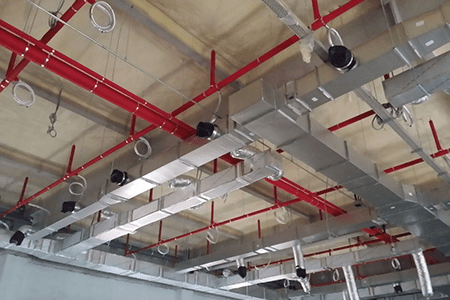إعلان مُمول
Sprinkle of Safety: A Guide to Sprinkler System Installation

Sprinkle of Safety: A Guide to Sprinkler System Installation
Introduction:
When it comes to safeguarding your property and loved ones, few things are as effective as a properly installed sprinkler system. Beyond just providing green lawns, sprinkler systems play a vital role in fire prevention and protection. In this guide, we'll walk you through the essential steps, considerations, and benefits of sprinkler system installation, helping you create a safer and more secure environment.
1. Understanding Sprinkler Systems:
Sprinkler systems are designed to control and extinguish fires by dispersing water in a controlled manner. They are especially valuable in residential, commercial, and industrial settings, effectively reducing fire damage and potential loss of life.
2. Types of Sprinkler Systems:
Wet Pipe Systems: These systems store pressurized water in pipes ready for immediate use. They are simple, reliable, and suitable for areas that do not experience freezing temperatures.
Dry Pipe Systems: Ideal for cold climates, dry pipe systems store pressurized air or nitrogen in pipes until a fire activates the system, releasing the air and allowing water to flow through.
Pre-Action Systems: A combination of dry and wet systems, pre-action systems require two triggers: a fire detection event and a sprinkler activation event. They are commonly used in areas with valuable equipment.
3. Planning and Design:
Fire Risk Assessment: Before installation, conduct a thorough assessment of your property's fire risks. Identify high-risk areas that require enhanced protection.
Hydraulic Calculations: Accurate calculations are essential to ensure that the sprinkler system delivers adequate water flow and pressure to control fires effectively.
Sprinkler Head Placement: Proper placement of sprinkler heads is critical. Consider factors such as ceiling height, obstructions, and the type of space to determine the optimal location.
4. Professional Installation:
Sprinkler system installation is a complex process that requires specialized knowledge and experience. Enlist the services of certified professionals who understand local building codes and regulations.
5. Compliance and Regulation:
Different regions have varying fire safety codes and regulations. Ensure your chosen system complies with these standards to avoid legal issues and ensure optimal safety.
6. Benefits of Sprinkler Systems:
Rapid Fire Suppression: Sprinkler systems provide immediate action in the event of a fire, controlling flames and reducing the spread of the fire.
Protection of Property: Sprinklers help minimize property damage, potentially saving valuable belongings and reducing repair costs.
Life Safety: Most importantly, sprinkler systems protect lives by creating a safer environment for occupants and first responders.
Insurance Premium Reduction: Many insurance companies offer reduced premiums for properties equipped with functioning sprinkler systems due to the decreased risk of extensive fire damage.
7. Maintenance and Testing:
Regular maintenance and testing ensure that your sprinkler system remains in optimal condition. Schedule routine inspections and address any issues promptly.
8. Educating Occupants:
Teach building occupants about the basics of the sprinkler system, including how it operates and the importance of not tampering with or obstructing sprinkler heads.
Conclusion:
Installing a sprinkler system is not just a choice; it's an investment in safety and peace of mind. By understanding the types of systems, proper planning, compliance requirements, and benefits, you're taking proactive steps to protect your property, loved ones, and business assets from the devastating effects of fire. A well-designed and professionally installed sprinkler system is indeed a "sprinkle of safety" that can make all the difference when it comes to fire prevention and protection.



